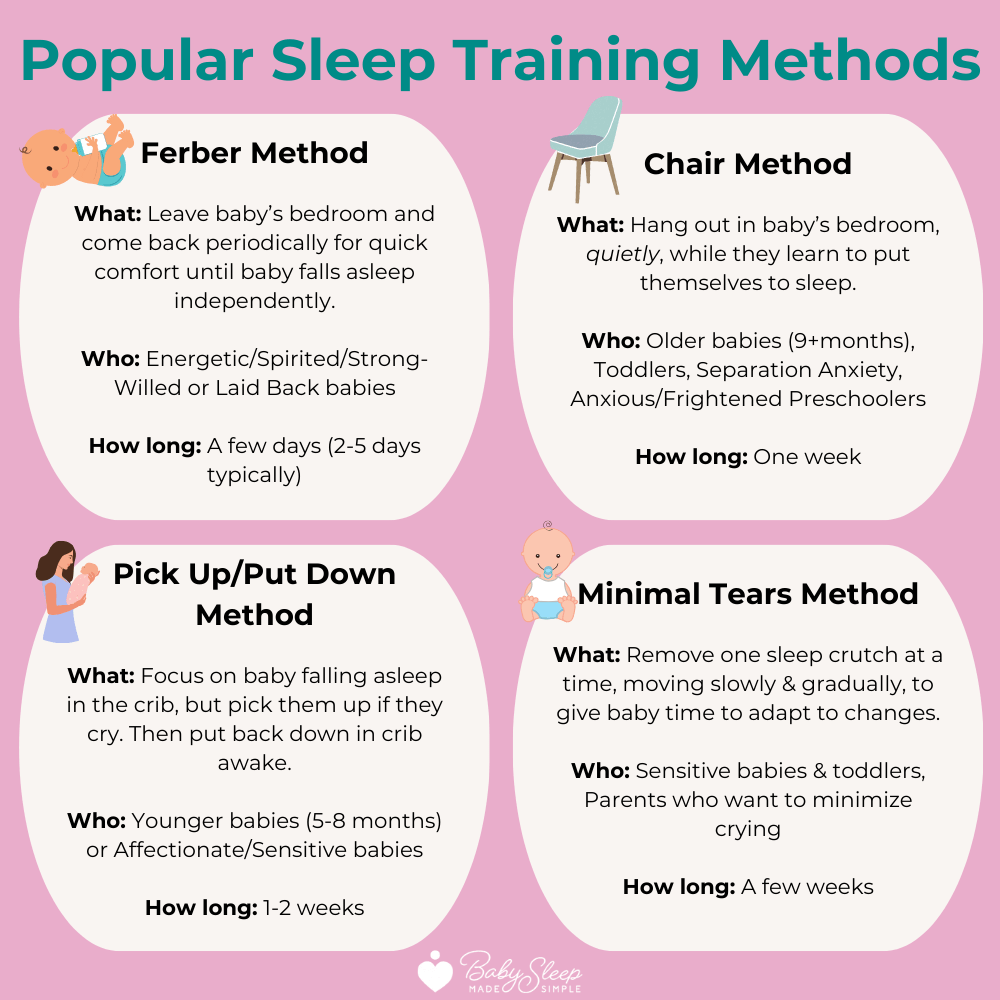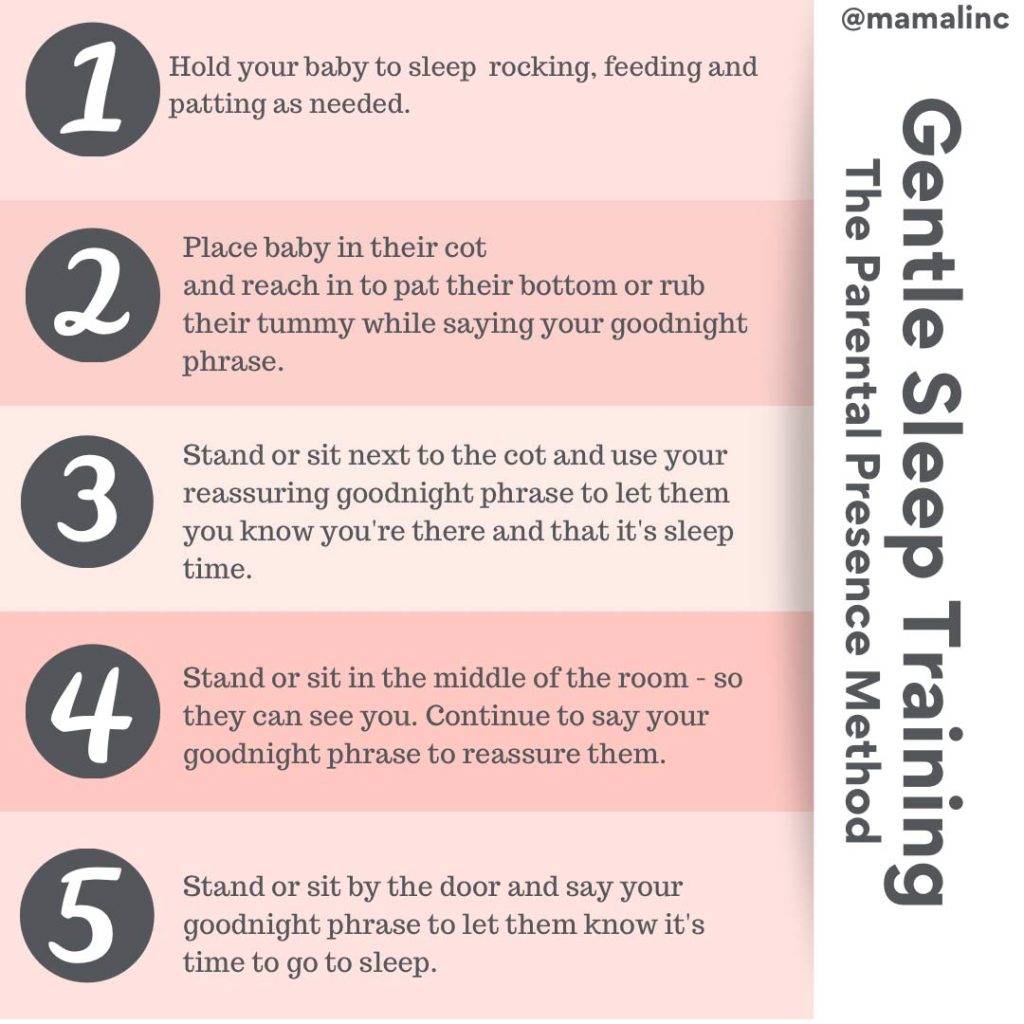Gentle sleep training methods can help your child sleep better. They don’t involve harsh techniques.
Many parents struggle with their child’s sleep issues. It’s common to feel overwhelmed and confused. You want your little one to get enough rest, but the methods you try seem too harsh. Gentle sleep training methods offer a kinder approach.
They focus on gradual changes and consistent routines. These methods can help your child learn to sleep well without tears or stress. You’ll find that a gentle approach can lead to peaceful nights for everyone. In this blog, we will explore various gentle sleep training methods that actually work. You’ll discover how to implement them effectively and see positive results. Let’s dive into the world of gentle sleep training.

Credit: www.babysleepmadesimple.com
Establishing A Bedtime Routine
Creating a bedtime routine with gentle sleep training methods can help children sleep better. Consistent bedtime habits ease the transition to sleep.
Establishing a bedtime routine can be a game-changer for gentle sleep training. A consistent and calming routine helps signal to your child that it’s time to wind down and prepare for sleep. This can significantly reduce bedtime resistance and promote a more restful night.
Consistency Is Key
Consistency is crucial when establishing a bedtime routine. Choose a specific time for bed and stick to it every night. This helps regulate your child’s internal clock.
Make sure the steps in your routine are predictable. For example, you might start with a bath, followed by putting on pajamas, brushing teeth, and reading a story. This predictability can make your child feel more secure and ready for sleep.
Avoid skipping steps, even on weekends. Skipping or changing the routine can confuse your child and make it harder for them to settle down. Do you find it challenging to stay consistent? Consider setting reminders on your phone to help you stick to the schedule.
Creating A Calming Environment
A calming environment is essential for a good night’s sleep. Dim the lights and reduce noise as bedtime approaches. This helps create a soothing atmosphere.
Consider incorporating a white noise machine or a gentle lullaby to mask household noises. This can be particularly helpful if you live in a noisy area or have other children.
Ensure the room is at a comfortable temperature. Overheating or being too cold can disrupt sleep. How does your child’s room feel at night? Adjust the temperature or add blankets as needed.
Personalize the space to make it cozy. Soft blankets, a favorite stuffed animal, and familiar bedtime stories can make the environment more inviting. What small changes can you make to create a more calming space for your child?
By consistently following a bedtime routine and creating a calming environment, you can help your child transition to sleep more easily. These gentle sleep training methods can be incredibly effective in promoting better sleep for both your child and you.
Gradual Sleep Training Techniques
Gradual sleep training techniques aim to help your baby sleep better with minimal stress. These methods involve small, incremental changes to your baby’s bedtime routine. Over time, your baby learns to sleep independently. These techniques are gentle and considerate of your baby’s needs. Let’s explore two popular methods: Incremental Adjustments and The Chair Method.
Incremental Adjustments
Incremental adjustments involve small, steady changes to your baby’s sleep routine. Start by adjusting bedtime by 15 minutes each night. This helps your baby gradually get used to sleeping earlier. Create a consistent bedtime routine. This could include a bath, a story, and a lullaby. Stick to this routine every night to build familiarity. Over time, your baby will understand that these steps mean it’s time to sleep.
Another incremental adjustment is to slowly reduce the time you spend soothing your baby to sleep. Each night, decrease the amount of rocking or patting by a few minutes. Your baby will learn to self-soothe and fall asleep on their own. Consistency is key. Make small changes and give your baby time to adapt. This gentle approach helps reduce sleep training stress for both you and your baby.
The Chair Method
The Chair Method is another gradual sleep training technique. Place a chair next to your baby’s crib. Sit in the chair while your baby falls asleep. Your presence offers comfort, making it easier for your baby to fall asleep. Each night, move the chair a little further from the crib. Eventually, you will sit outside the room with the door open. Your baby will learn to fall asleep without your immediate presence.
Throughout this process, avoid picking up your baby from the crib. Use your voice to soothe them if they become upset. This method builds your baby’s confidence in their ability to fall asleep alone. Patience is important. Each baby adapts at their own pace. The Chair Method is a gentle way to teach your baby independent sleep habits.
Tools And Tips For Gentle Sleep Training
Gentle sleep training offers a way to help your child sleep better. It avoids harsh techniques. This method respects your child’s need for comfort. It also supports their natural development. Below, find helpful tools and tips.
Sleep Training Aids
Sleep training aids can make bedtime easier. White noise machines are popular. They create a soothing environment. Soft, calming music can also help. It signals that it’s time to sleep.
Comfort objects are another aid. A favorite blanket or stuffed animal can provide comfort. Nightlights can help children who fear the dark. Choose one with a soft, warm glow.
Positive Reinforcement
Positive reinforcement encourages good sleep habits. Praise your child for staying in bed. Celebrate small victories. This can make them feel proud.
Reward charts work well. Give a sticker for each night they sleep well. After a few stickers, offer a small reward. This keeps them motivated.
Gentle sleep training can be successful with the right tools. Consistency and patience are key. Your child will learn to sleep well in a supportive environment.

Credit: mamalinc.com
Frequently Asked Questions
What Is The Most Effective Gentle Sleep Training Method?
The most effective gentle sleep training method is the “Ferber method,” which involves gradually increasing intervals of comforting. It promotes self-soothing and consistency.
What Is The 5-3-3 Rule For Sleep Training?
The 5-3-3 rule for sleep training involves 5 minutes of crying, 3 minutes of soothing, and 3 cycles. This helps babies self-soothe and learn to sleep independently.
What Is The 5 10 15 Rule For Baby Sleep?
The 5 10 15 rule involves gradually increasing the time before responding to a baby’s cries. Start with 5 minutes, then 10 minutes, and finally 15 minutes. This method helps babies learn to self-soothe and sleep independently.
What Is The Gentler Version Of The Ferber Method?
The gentler version of the Ferber method is the “no tears” sleep training method. It emphasizes gradual, comforting techniques.
What Is Gentle Sleep Training?
Gentle sleep training involves methods that help babies sleep without much crying. It focuses on comfort and consistency.
Conclusion
Gentle sleep training methods can help your baby sleep better. Consistency is key. Stay patient and calm. These methods take time but they are effective. Your child’s sleep will improve gradually. Trust the process. You both deserve restful nights. Implement these techniques and see positive changes.
Happy sleeping to you and your little one!

